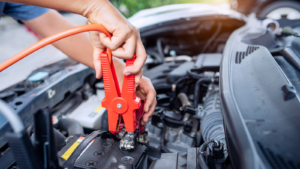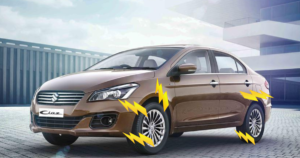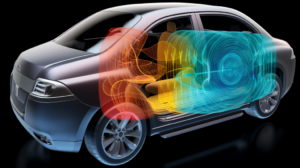As winter wraps its icy arms around the landscape, a blanket of frost clinging to every surface, the reality of driving electric vehicles (EVs) in cold weather becomes starkly apparent. Imagine the sting of the brisk wind as you daringly reach out to unplug your EV, the digital dashboard revealing a disheartening drop in range. Chilly weather, it seems, holds a unique set of challenges for EVs.
The efficiency and performance of these vehicles take a hit, as plummeting temperatures lead to decreased battery capacity and increased energy demands. This piece aims to delve into the complexities of navigating frosty roads in an EV, shedding light on the interaction between these eco-friendly machines and the unforgiving winter cold.
Despite these challenges, the popularity of EVs is skyrocketing. With a global shift towards sustainability, these silent, emission-free vehicles have captured the imagination of millions. However, just as we would adapt our driving techniques and routines to accommodate for icy roads or poor visibility, understanding the performance of our EVs in cold weather conditions is crucial.
This is not just a matter of convenience, but of safety, reliability, and even extending the lifespan of your EV. So buckle up and join MotorGuiderr as we journey through the winter wonderland in our thriving EVs, unravelling the realities behind their chilly weather demeanour.
Table of Contents
ToggleThe Impact of Cold Weather on EVs:
Battery Performance:
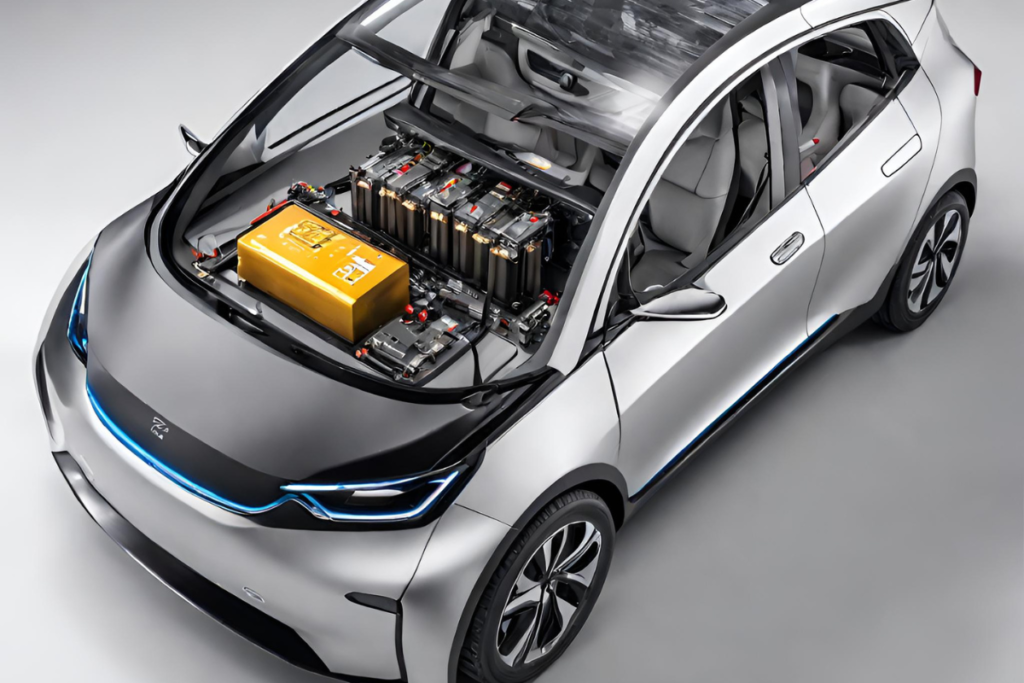
Cold temperatures can significantly impact the efficiency and performance of the lithium-ion batteries that power EVs. As the mercury drops, the chemical reactions within the battery slow down, reducing its ability to hold a charge and consequently, the driving range of the EV.
This phenomenon, often referred to as ‘range anxiety’, is a common concern among EV drivers. Moreover, additional energy demands like heating the cabin further drain the battery, exacerbating the decreased range. Hence, it is not uncommon for EV users to experience a 20-40% reduction in their vehicle’s range during the coldest months of the year. However, understanding this aspect can help users plan their trips and charging strategies better in cold weather conditions.
Charging Challenges:
Cold weather not only affects the range of EVs but also presents a set of challenges for their charging infrastructure. In freezing temperatures, EV batteries take longer to recharge—a phenomenon known as ‘charge throttling’. This can put additional strain on charging systems, which are often less efficient in the cold.
Another hurdle is the potential scarcity of charging stations in areas that experience severe winter weather. These regions may have fewer charging facilities due to the challenges of maintaining and operating such infrastructure in harsh weather conditions.
However, these challenges are not insurmountable. Here are a few tips to overcome them:
- Preconditioning Your EV: EVs come with a feature that preconditions the battery by warming it up while still plugged in. This can help mitigate the impact of cold weather on the charging speed.
- Scheduled Charging: Use your EV’s charging scheduler to charge during off-peak hours when electricity demand is lower. This can help maximize charging efficiency and reduce energy costs.
- Choose the Right Charging Equipment: Invest in a higher-kilowatt charger for your home if possible. These systems can charge your EV faster, lessening the impact of cold weather on charging times.
- Plan Your Trip Around Charging Stations: Use a navigation app that shows charging stations along your route. This way, you can plan your drives to ensure you won’t run out of battery power.
Understanding and implementing these strategies can help EV users navigate the challenges of cold weather while ensuring their vehicles remain reliable and efficient on frosty roads.
Tips for EV Owners in Cold Climates:
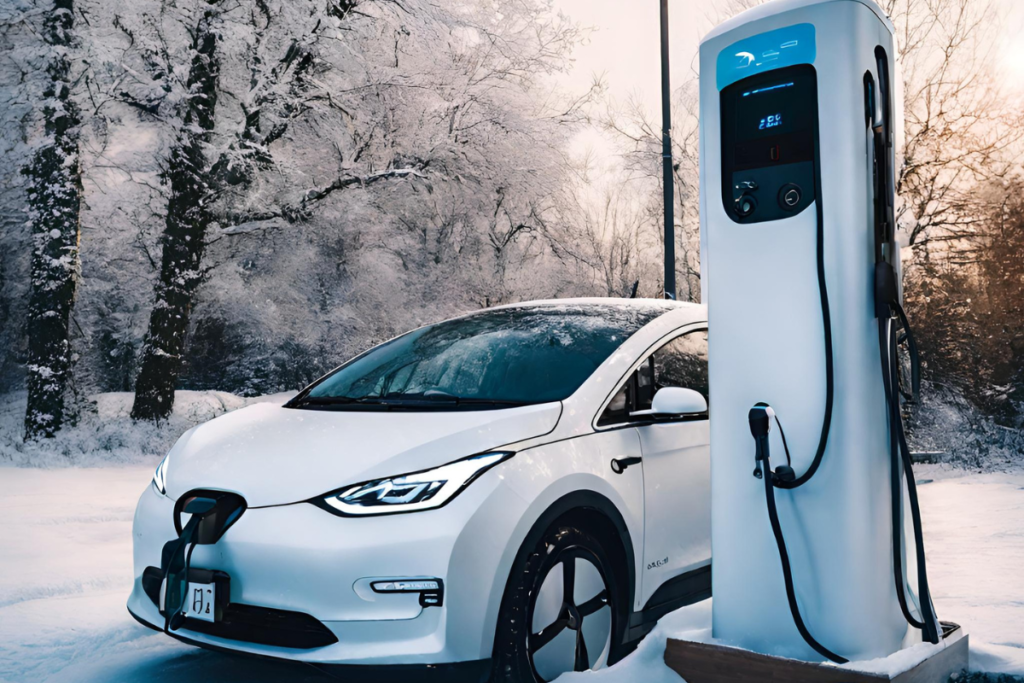
Battery Management Tips:
Managing the battery of your EV during cold weather is essential for maintaining its efficiency. Here are some practical tips that can help you in this regard:
- Keep Your EV Plugged In: By keeping your EV plugged in when not in use, you help maintain the battery temperature. The charging process inherently generates heat which can help keep the battery warm and improve its performance in the cold.
- Opt for Heated Seats and Steering Wheel: Instead of using the cabin heater, which requires a significant amount of energy, opt for heated seats and a heated steering wheel if your vehicle has these features. These alternatives use less energy, preserving more battery power for driving.
- Limit High-Speed Driving: High-speed driving can consume more energy, reducing your EV’s range. When driving in cold weather, try to moderate your speed to conserve battery life.
- Use Eco Mode: If your EV has an eco mode, use it. This feature adjusts the vehicle’s power consumption, including the energy used for heating and cooling, which can help extend your battery life during cold weather.
- Take Advantage of Regenerative Braking: Regenerative braking is a feature in many EVs that converts the energy wasted during braking back into power for the battery. Using this feature, especially in stop-and-go traffic, can help extend your EV’s range.
By implementing these strategies, you can better manage your EV’s battery in cold weather, improving its performance and increasing its range.
Winter Tire Recommendations for EVs:
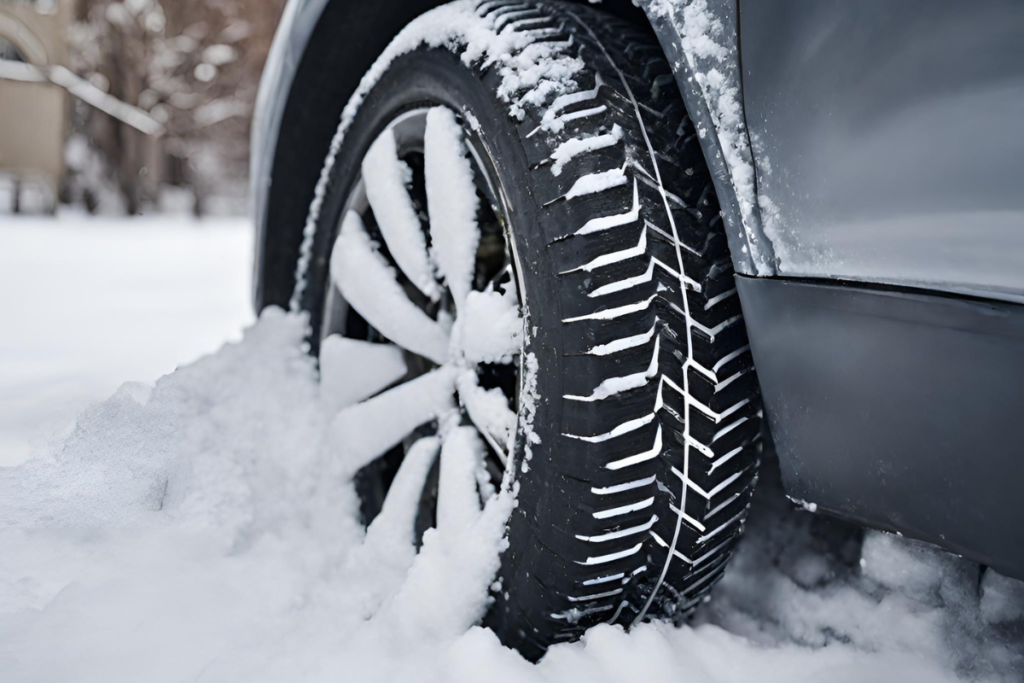
Winter tires are of paramount importance for driving any vehicle, including EVs, in snow and ice. These tires are specifically designed with a softer rubber compound and unique tread patterns to provide better traction, handling, and braking efficiency in cold, wintry conditions. Here are a few specific models suitable for EVs:
- Michelin X-Ice Xi3: This tire is a great choice for electric vehicles. It’s designed for maximum traction in snow, ice, and slush, and its low rolling resistance can help preserve your EV’s range.
- Bridgestone Blizzak WS80: Known for its impressive grip and control, the Blizzak WS80 is a popular choice among EV drivers. It offers reliable performance in harsh winter conditions and also features a special tread pattern to improve traction.
- Nokian Hakkapeliitta R3: This tire is renowned for its excellent grip in snowy and icy conditions. Its low rolling resistance design is ideal for EVs, helping to maintain your vehicle’s range in the cold.
- Continental VikingContact 7: This tire offers superior performance in cold weather, with an impressive ability to maintain grip on snowy or icy roads. It also includes a tread pattern that effectively expels water and slush for improved traction.
Remember, regardless of the model, it’s crucial to invest in high-quality winter tires to enhance your safety and the performance of your EV in cold weather.
Regenerative Braking Considerations in Cold Weather:
Regenerative braking, a popular feature in many electric vehicles, is a system that converts the energy wasted during braking back into power for the battery. This helps extend the vehicle’s range, making it a crucial element of EV performance. However, in colder weather, the efficiency of regenerative braking can be compromised.
The reason is that the lithium-ion batteries in EVs are sensitive to temperature. When the temperature drops, the battery’s ability to accept a charge diminishes, which in turn, can reduce the effectiveness of regenerative braking. On very cold days, you might notice that your regenerative braking system is less powerful or even temporarily disabled when you first start driving. This is to avoid damage to the battery from charging too quickly when it’s cold.
To maximize the efficiency of regenerative braking in cold weather, here are a few strategies:
- Precondition Your EV: As mentioned earlier, preconditioning your EV warms up the battery while the vehicle is still plugged in. This helps to bring the battery to its optimal operating temperature, allowing it to accept a charge more efficiently from regenerative braking.
- Keep Your Battery Charged: Keeping your battery adequately charged can help maintain its temperature, thus increasing the efficiency of regenerative braking. Be cautious, however, not to fully charge the battery as it can reduce the space available for the energy recouped from regenerative braking.
- Drive Smoothly: Smooth, steady driving and gradual braking can maximize the energy recovery of the regenerative braking system. Sudden or hard braking bypasses the regenerative system and uses the conventional brakes, wasting potential energy.
- Use Eco Mode: Utilizing the eco mode in your EV can optimize battery performance, including the effectiveness of regenerative braking systems during cold weather.
By implementing these strategies, you can optimize the efficiency of your EV’s regenerative braking system, even in cold weather, ultimately enhancing your vehicle’s range and performance.
Overcoming Range Anxiety in Winter:
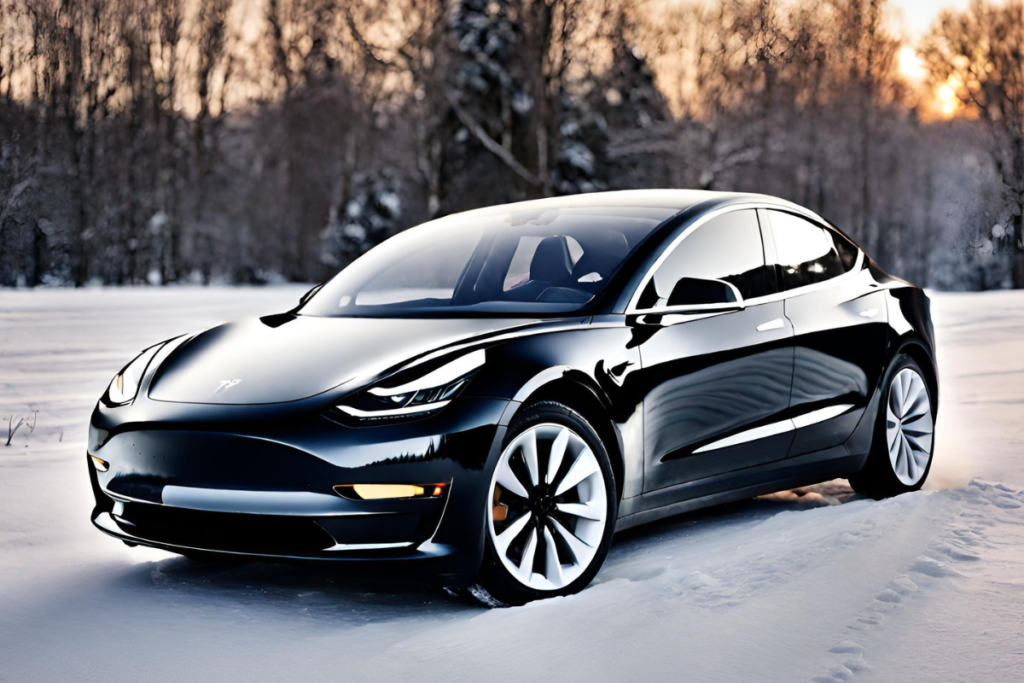
Adapting to Range Variability in Cold Weather:
Electric vehicles (EVs) are known for their efficiency and environmental friendliness, but it’s important to understand that the range – or the distance an EV can travel on a single charge – can vary significantly depending on the weather, with cold conditions often resulting in a noticeable reduction. This is primarily due to the energy required to heat the vehicle’s cabin and keep the battery warm. Here’s how you can adapt to this variability and set realistic expectations for your EV’s range during winter:
- Anticipate the reduction: It’s typical to see a decrease in range of about 20-40% during cold weather. Anticipating this can help you plan your trips more effectively and avoid range anxiety.
- Utilize preconditioning: As discussed earlier in this guide, preconditioning your EV while it’s still plugged in can warm up the battery and the cabin. This can help save battery power once you’re on the road.
- Plan for more frequent charging: If possible, try to plan your routes to include EV charging stations. This allows you to recharge more frequently, ensuring you always have enough power to reach your destination.
- Adopt efficient driving habits: Smooth driving, gradual acceleration, and avoiding high speeds can all help to conserve battery power, increasing your EV’s range.
- Limit use of cabin heater: Using the cabin heater sparingly, and instead relying on seat heaters and steering wheel heaters, can help save significant energy.
By understanding and adapting to these factors, you can better manage your EV’s range in cold weather, ensuring a smooth and stress-free driving experience.
Planning for Longer Trips in Cold Conditions:
When it comes to planning longer journeys in your EV during cold weather, strategic route planning and charging station mapping are crucial. Here are some tips to make your trip as smooth as possible:
- Map your Charging Stations: Before you set out on your journey, use a charging station app or your vehicle’s navigation system to locate charging stations along your route. Plan your stops so that you never run too low on battery.
- Increase your Charging Stops: Cold weather can impact your EV’s range, so you may need to stop more frequently to charge. Although this might add a little extra time to your journey, it will ensure you don’t run out of battery.
- Choose your Route Wisely: Where possible, choose routes that have plenty of charging stations. If you’re driving in particularly cold conditions, you may also want to stick to major highways where help is more readily available if needed.
- Plan for Delays: Winter weather can be unpredictable, and delays due to weather conditions or traffic are more likely. Have a plan for what you’ll do if you get stuck in traffic and the battery level starts to get low.
- Stay Flexible: Have a backup plan in case a charging station is out of order, full, or if you consume more battery than expected. Consider having alternative routes and charging stations in mind.
By carefully planning your long journeys with these tips in mind, you can assure a worry-free, efficient trip in your EV, even in cold weather.
Cold Weather EV Models:
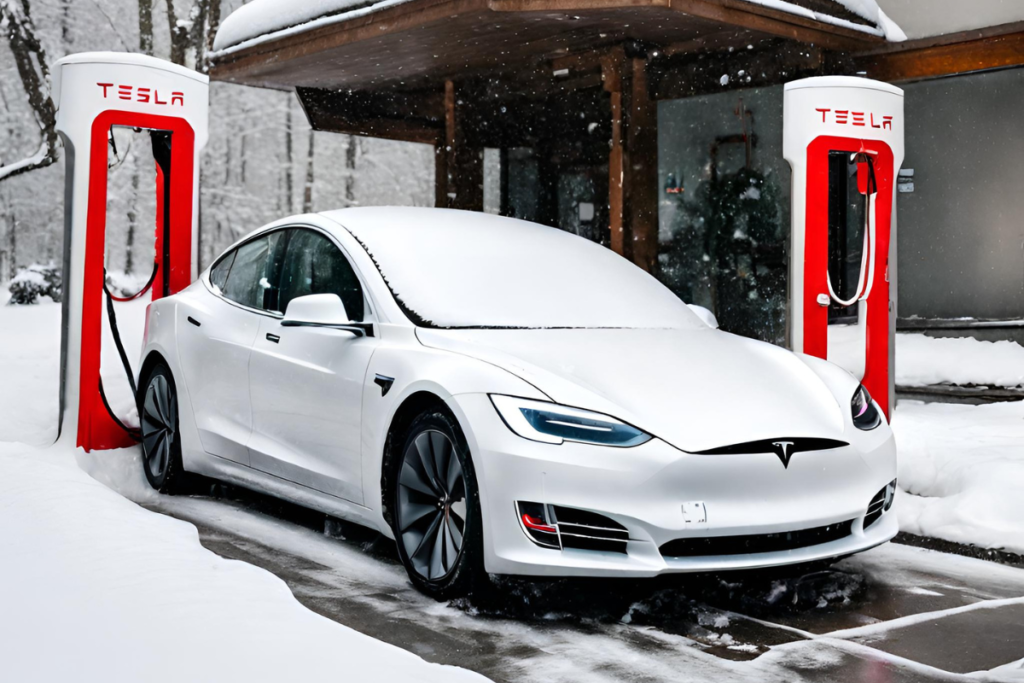
While all EVs may experience some reduction in range and efficiency in cold weather, certain models have been designed with features specifically to handle winter conditions, making them particularly resilient. These include:
- Tesla Model 3: This model boasts a heat pump system that is more energy-efficient in heating the cabin and battery in comparison to traditional methods. Furthermore, the Model 3 is equipped with an all-wheel drive option and has a “Range Mode” that conserves battery life, ideal for winter driving.
- Nissan Leaf: The Nissan Leaf includes a battery heater to counteract cold temperatures. It also features an “Eco Mode” to optimize battery usage and a “B Mode” to maximize regenerative braking, both of which help in reducing the effect of cold weather on the range.
- Audi e-Tron: The Audi e-Tron utilizes a thermal management system to maintain the battery at its optimal operating temperature, thereby ensuring consistent performance, even in colder conditions. Its aerodynamic design and all-wheel drive further enhance its winter capabilities.
- Chevrolet Bolt EV: The Bolt EV features a sophisticated thermal management system to keep its battery at the right temperature. Additionally, it has an “Hilltop Reserve” feature which leaves some room in the battery for regenerative energy when fully charged, useful in hilly, icy conditions.
- BMW i3: The BMW i3 is equipped with an efficient heat pump and a range-extender engine. The car’s “Eco Pro” and “Eco Pro+” modes help to extend the range when temperatures drop, making it a reliable option for winter driving.
These models exemplify the ongoing efforts by manufacturers to enhance the cold weather performance of EVs. By choosing a model with winter-friendly features, EV owners can ensure a more efficient and comfortable driving experience in cold conditions.
Case Studies and User Experiences with EV Cars in Winter:
Real-Life Experiences: Navigating Cold Weather Challenges
Let’s now dive into some real-life experiences of EV owners who have successfully navigated the challenges of cold weather. These stories shed light on the lessons learned and best practices that can be utilized by others.
EV Cars in Cold Weather Story #1: Tim’s Tesla in the Colorado Winter
Tim, a Tesla Model 3 owner from Colorado, shares his experience of driving his EV in the bitterly cold Colorado winters. He found that utilizing the ‘Scheduled Departure’ and ‘Preconditioning’ features in his Tesla while it was still plugged in, allowed him to warm up his car in the mornings without reducing his battery range. By doing so, Tim was able to maintain a relatively consistent range throughout the winter months.
EV Cars Cold Weather Story 2: Emily’s Nissan Leaf Adventure in Minnesota
Emily, an owner of a Nissan Leaf, lives in Minnesota and frequently travels to neighboring towns during winter. She emphasizes the importance of planning charging stops and being prepared for occasional out-of-order charging stations. Emily always checks the status of charging stations through an app before hitting the road and plans alternative stops to avoid lower than expected charge levels.
EV Cars in Cold Weather Story 3: Mark’s Audi e-Tron Journey in Canada
Mark drives an Audi e-Tron in Ontario, Canada, where winter can be particularly harsh. He stresses the importance of understanding your EV’s range in cold temperatures. Mark soon learned that his e-Tron performed best when kept at a consistent, slow speed, rather than fast, sporadic bursts of speed. This knowledge helped him extend the range of his EV during his winter commutes, proving that adopting efficient driving habits can significantly influence your EV’s performance in cold weather.
These stories highlight that while EVs do require some additional considerations in colder climates, with some careful planning and good practices, they can be just as reliable and convenient as traditional vehicles.
Future Developments:
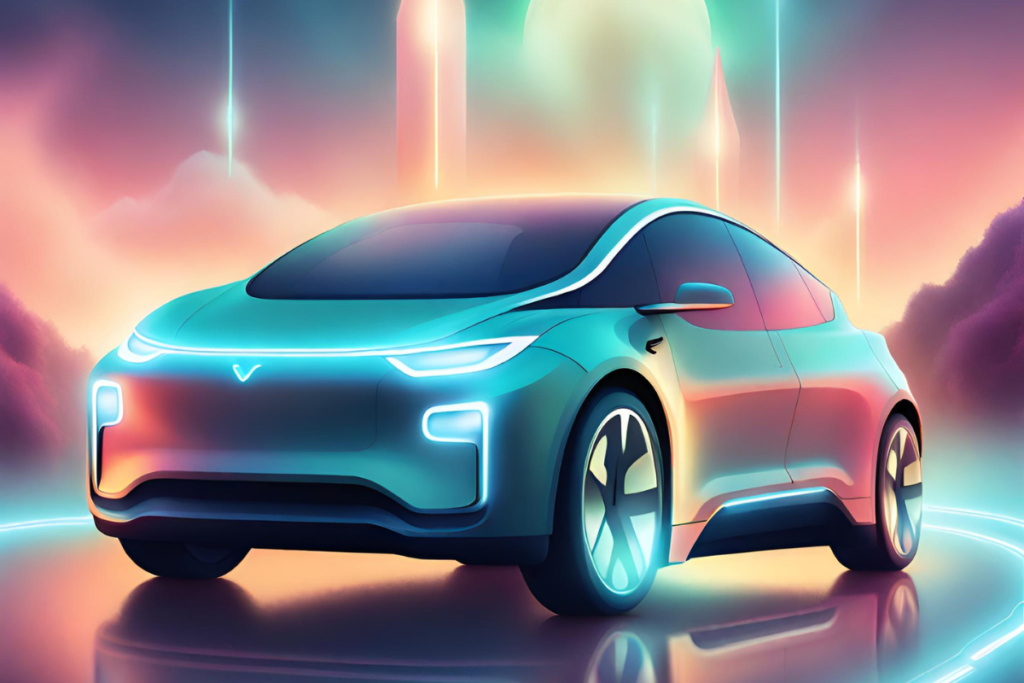
Technology and research are continually evolving to improve the performance of EVs in cold climates. One of the most promising areas of exploration involves advanced battery technologies. Lithium-ion batteries, currently the most common type in EVs, are known to perform sub-optimally in cold weather. Scientists are now developing new types of batteries, such as solid-state and lithium-sulfur batteries, that could potentially offer superior performance in freezing conditions.
Another noteworthy advancement relates to smarter energy management systems. For instance, machine learning algorithms are being used to develop intelligent climate control systems that optimize energy use, thus reducing the drain on the battery during cold weather.
Car manufacturers are also focusing on advanced insulation techniques to limit the energy required to heat the vehicle’s interior. Some EVs are being designed with heat pumps, which are more efficient than traditional heating systems, especially in colder climates.
In addition to improvements in the vehicles themselves, the infrastructure supporting EVs is also seeing advancements. For instance, range prediction tools are becoming more sophisticated by accounting for real-time weather conditions and topography to provide more accurate estimates.
These developments promise a future where the impact of cold weather on EVs is significantly reduced, making them an ever more viable choice for consumers in all climates.
Conclusion:
As we continue to navigate towards a more sustainable future, the Electric Vehicle (EV) market shows no signs of slowing down. While EVs still face challenges in cold weather, the real-life experiences of EV owners and the ongoing advancements in technology emphasize the feasibility of owning these vehicles even in colder climates.
By understanding these challenges, planning accordingly, and leveraging the evolving technology, EV owners can enjoy the benefits of their vehicles, regardless of the season. As we usher in a new era of mobility, EVs stand at the forefront, promising an environmentally friendly, efficient, and reliable mode of transportation, come rain or shine, summer or winter.
We hope you found this guide on navigating chilly terrains with EVs helpful! We would love to hear your experiences too. Do you own an electric vehicle and drive it in cold weather? How do you deal with the challenges? Or maybe you have additional tips and tricks that others might find useful? Please feel free to share your stories, ask questions, or provide additional insights in the comments section below. Let’s build a community that supports each other in our journey towards a more sustainable and efficient future!

